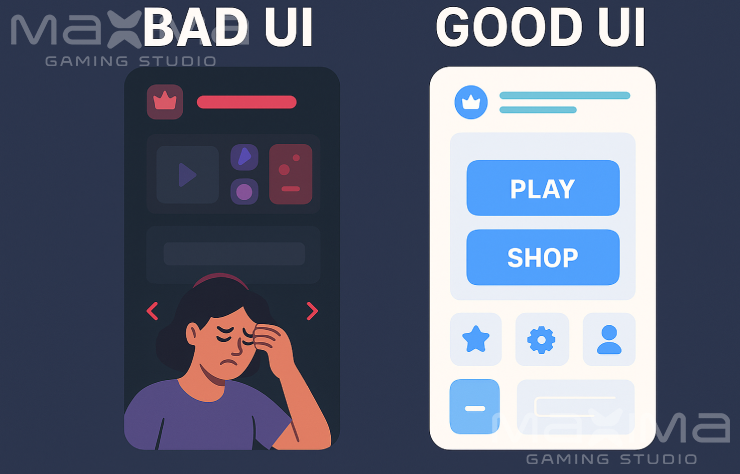 August 21, 2025
August 21, 2025
UI/UX Mistakes to Avoid in Game Design
In game development, UI (User Interface) and UX (User Experience) are just as important as graphics, story, and gameplay. Even the most fun and innovative game can frustrate players if the menus are confusing, the controls are clunky, or the layout feels overwhelming. To help you create smoother and more enjoyable games, let’s look at the most common UI/UX mistakes to avoid in game design.
1. Overcomplicated Menus
Players want to jump into the game quickly. Long, cluttered menus with too many options can slow them down.
Tip: Keep menus clean, well-structured, and prioritize essential options like Play, Settings, and Exit.
2. Poorly Placed Controls
Controls that aren’t intuitive (especially in mobile games) can ruin the experience. Buttons too close together or hidden in awkward spots lead to accidental taps.
Tip: Test layouts on different devices and make sure core actions are easy to reach.
3. Ignoring Onboarding and Tutorials
Throwing players into the game without guidance often leads to frustration.
Tip: Add a short, interactive tutorial or tooltips to explain core mechanics without overwhelming players.
4. Inconsistent Design
Using different fonts, button styles, or colors across screens confuses players and breaks immersion.
Tip: Stick to a consistent design system — color schemes, typography, and iconography should feel unified.
5. Too Much On-Screen Information
Cluttering the screen with too many icons, stats, or pop-ups distracts players from the game itself.
Tip: Show only essential information during gameplay. Use expandable menus or overlays for secondary details.
6. Weak Feedback for Player Actions
Players need confirmation that their actions worked (like pressing a button, completing a mission, or earning a reward).
Tip: Use visual cues (animations, highlights) and audio effects to provide instant feedback.
7. Forgetting Accessibility
Not considering color-blind players, adjustable font sizes, or customizable controls excludes a huge part of the audience.
Tip: Add accessibility features to make your game inclusive for everyone.
Final Thoughts
Great UI/UX doesn’t just make a game look polished — it improves immersion, reduces frustration, and keeps players engaged longer. By avoiding these common mistakes and focusing on simplicity, clarity, and player comfort, you’ll create a game experience that feels smooth and enjoyable.


